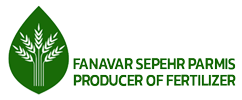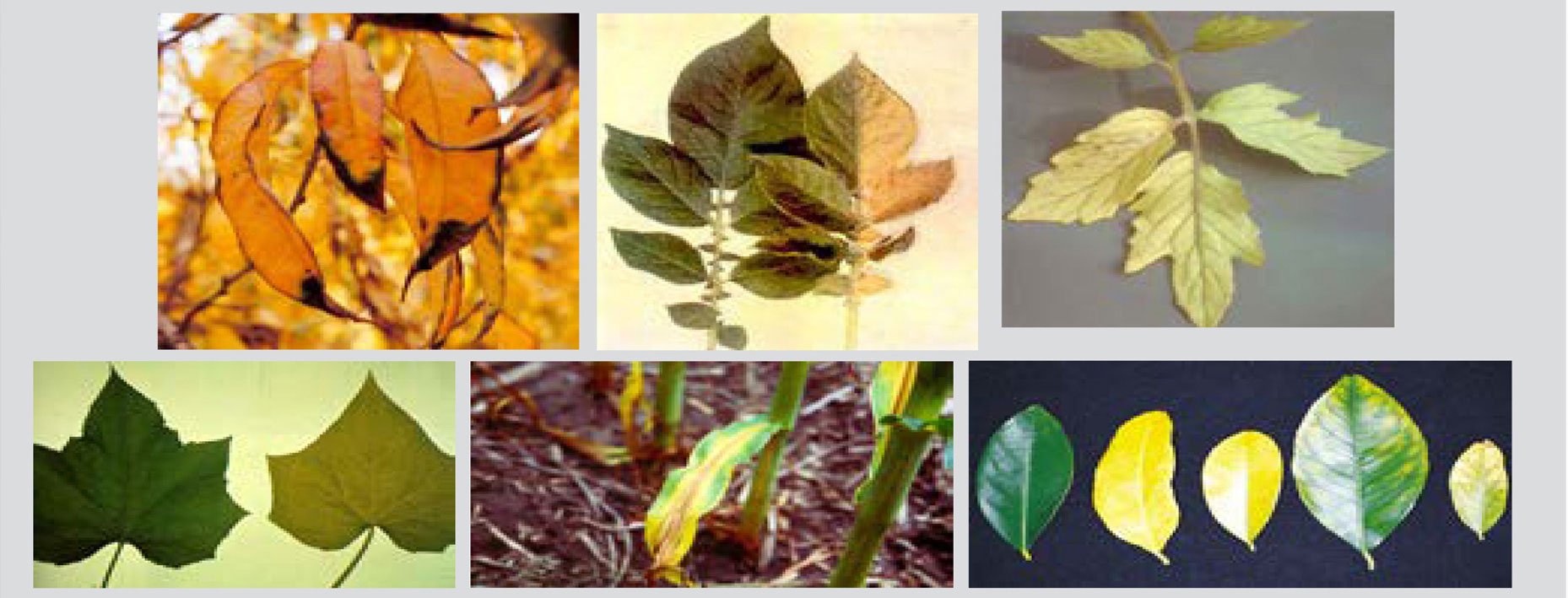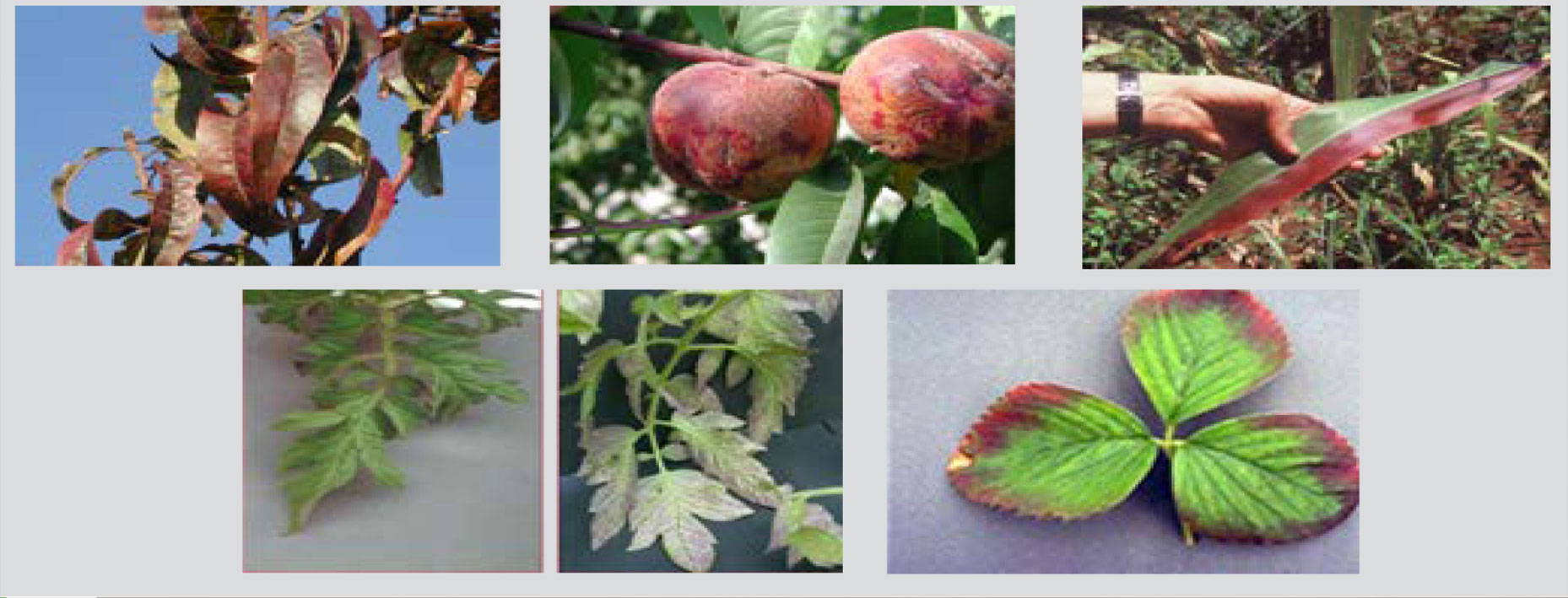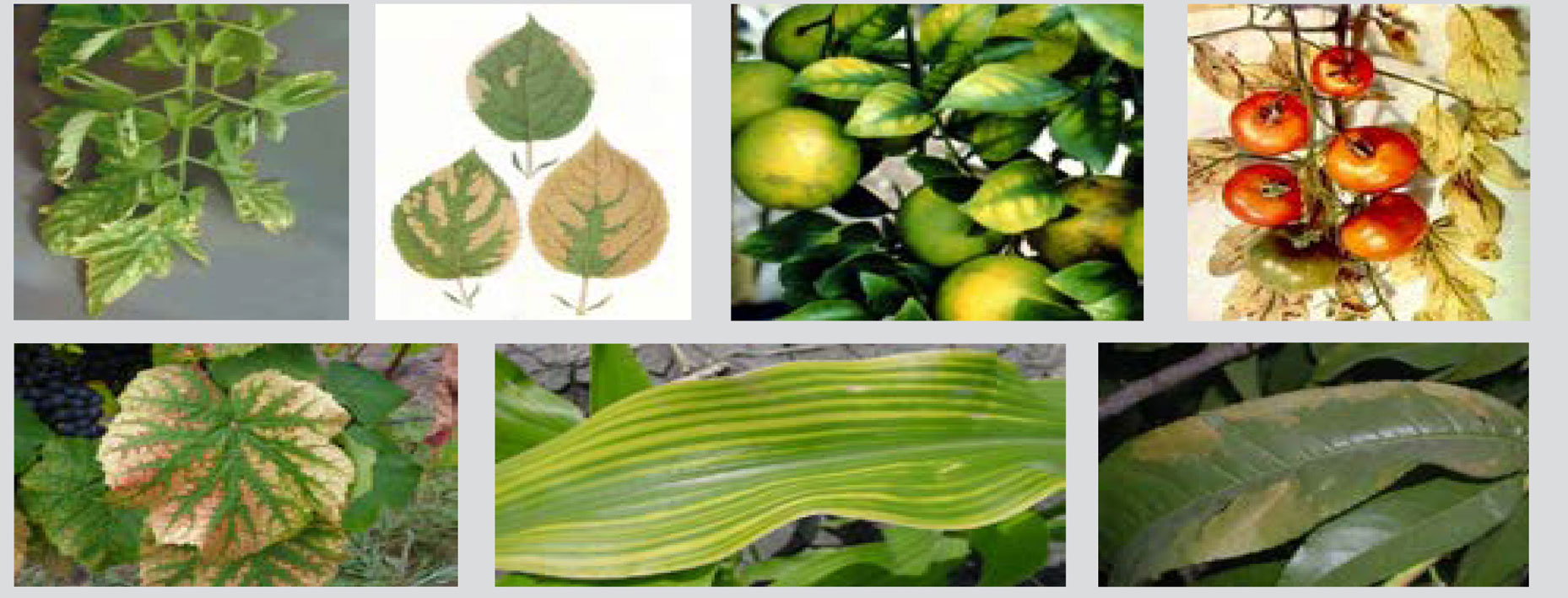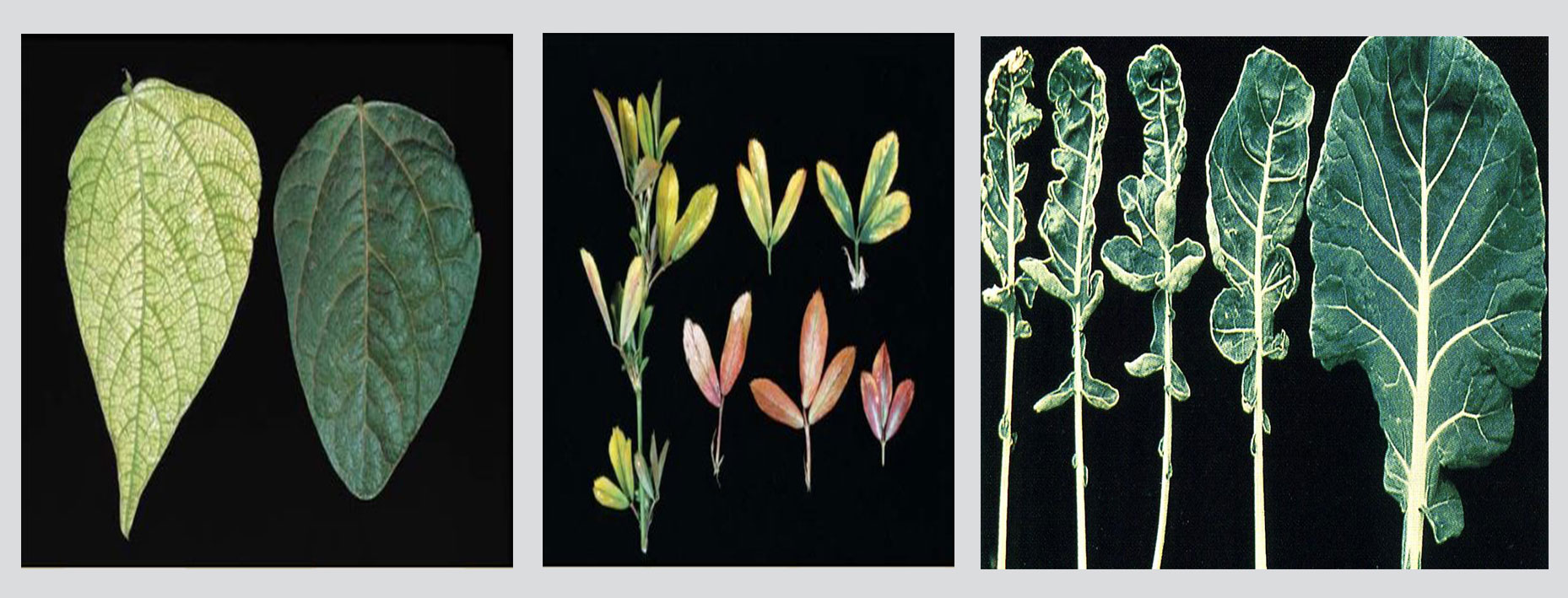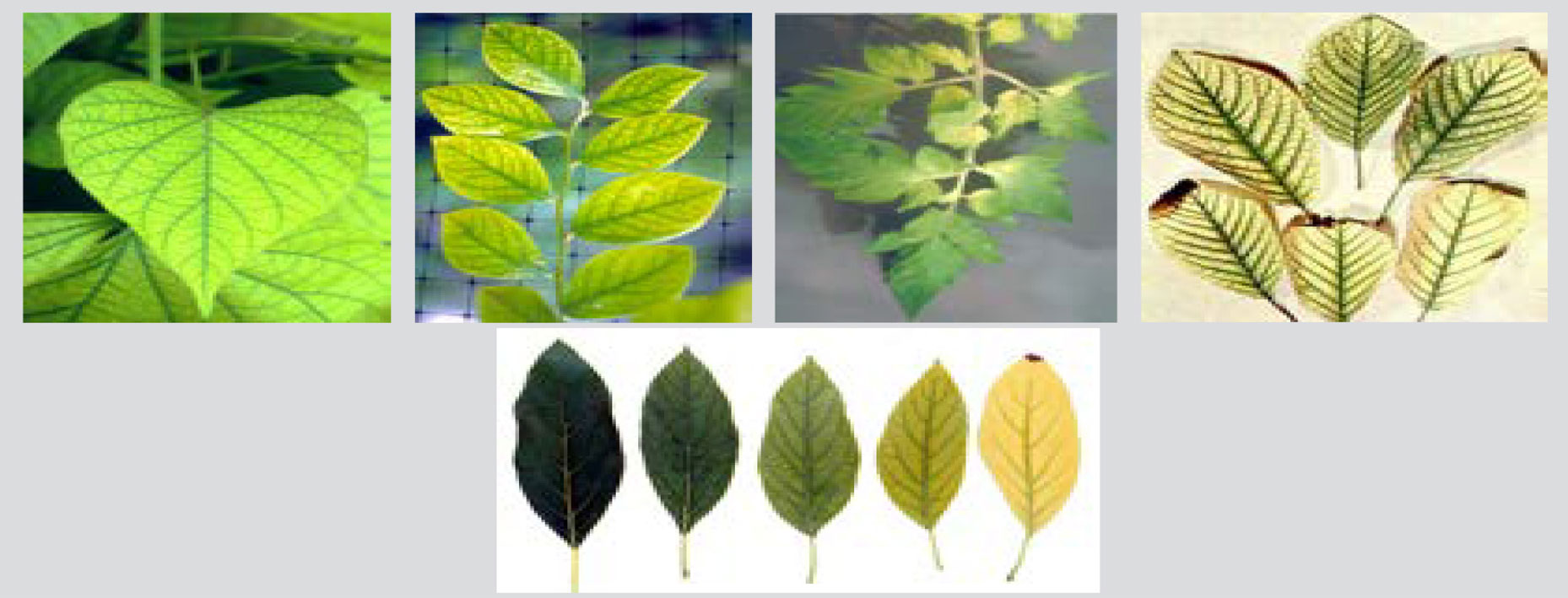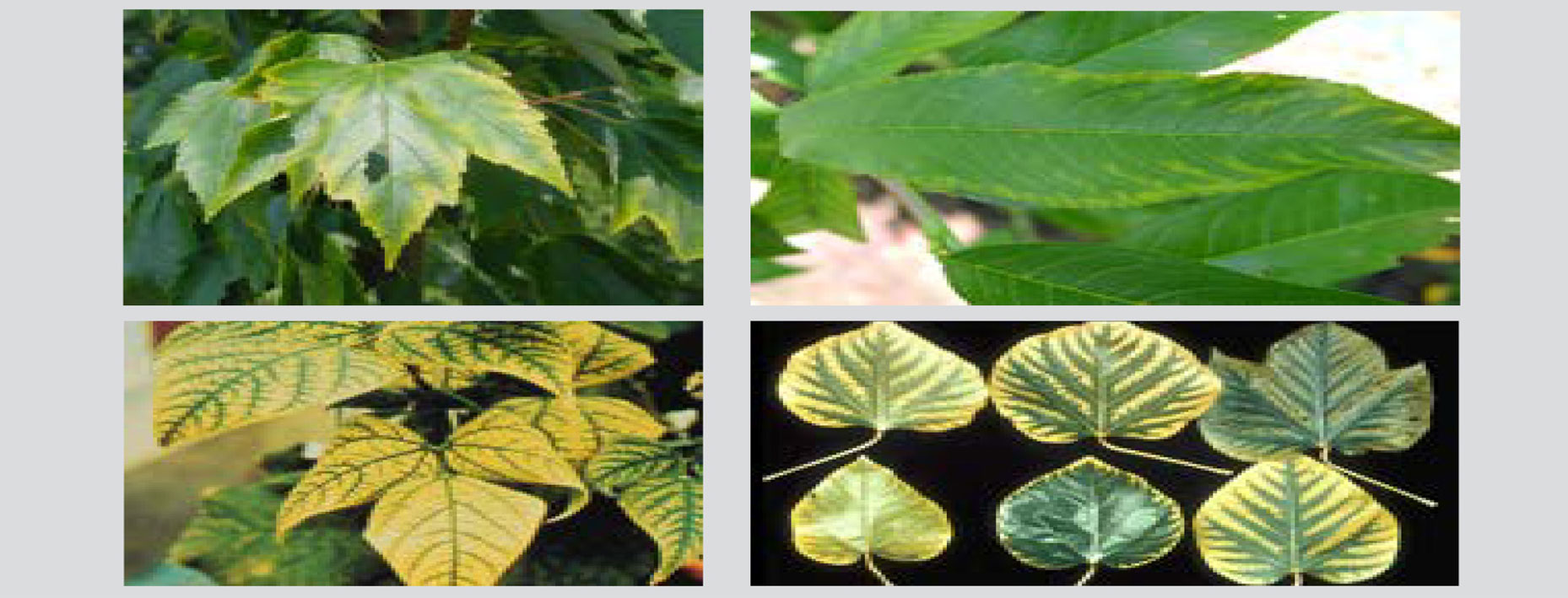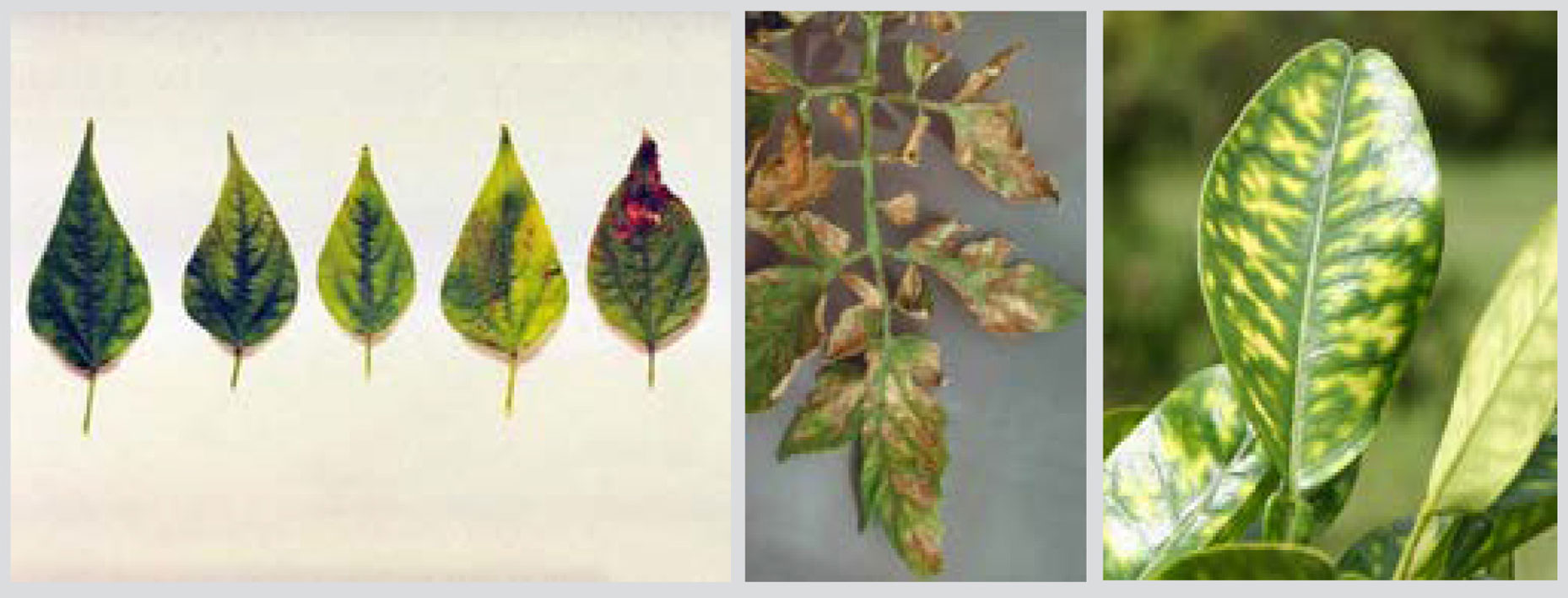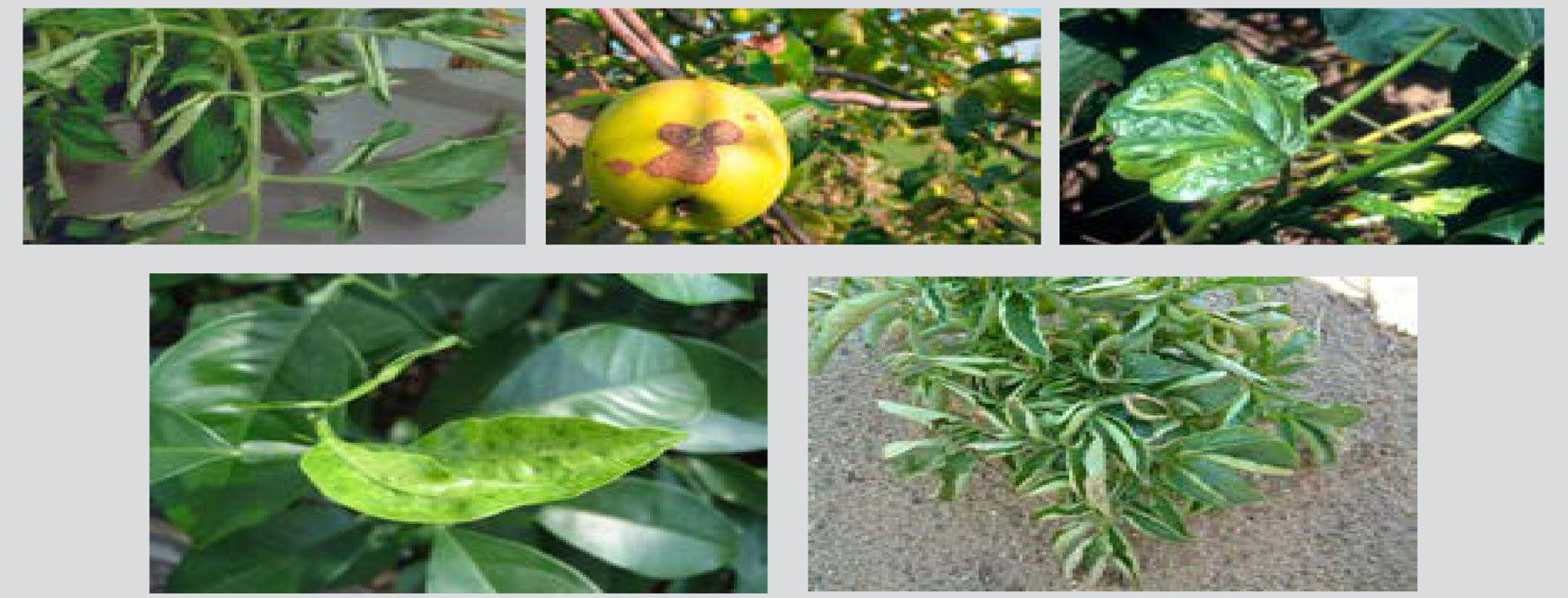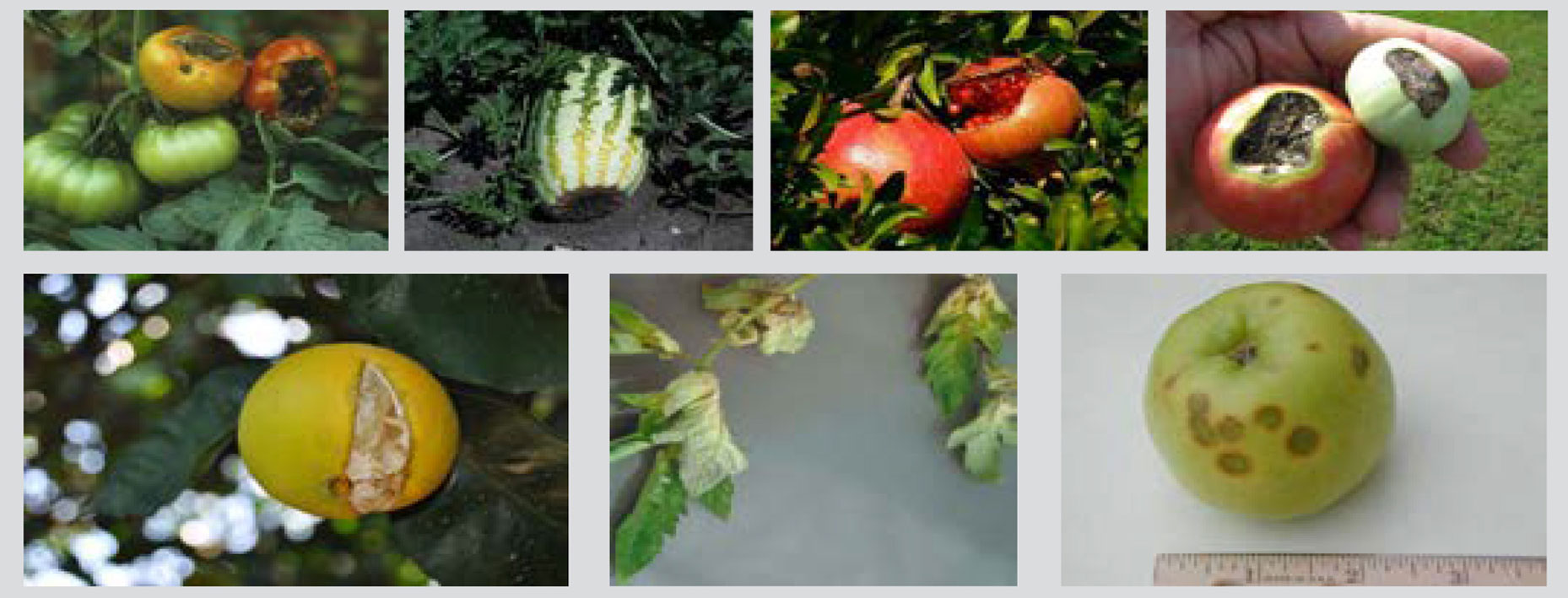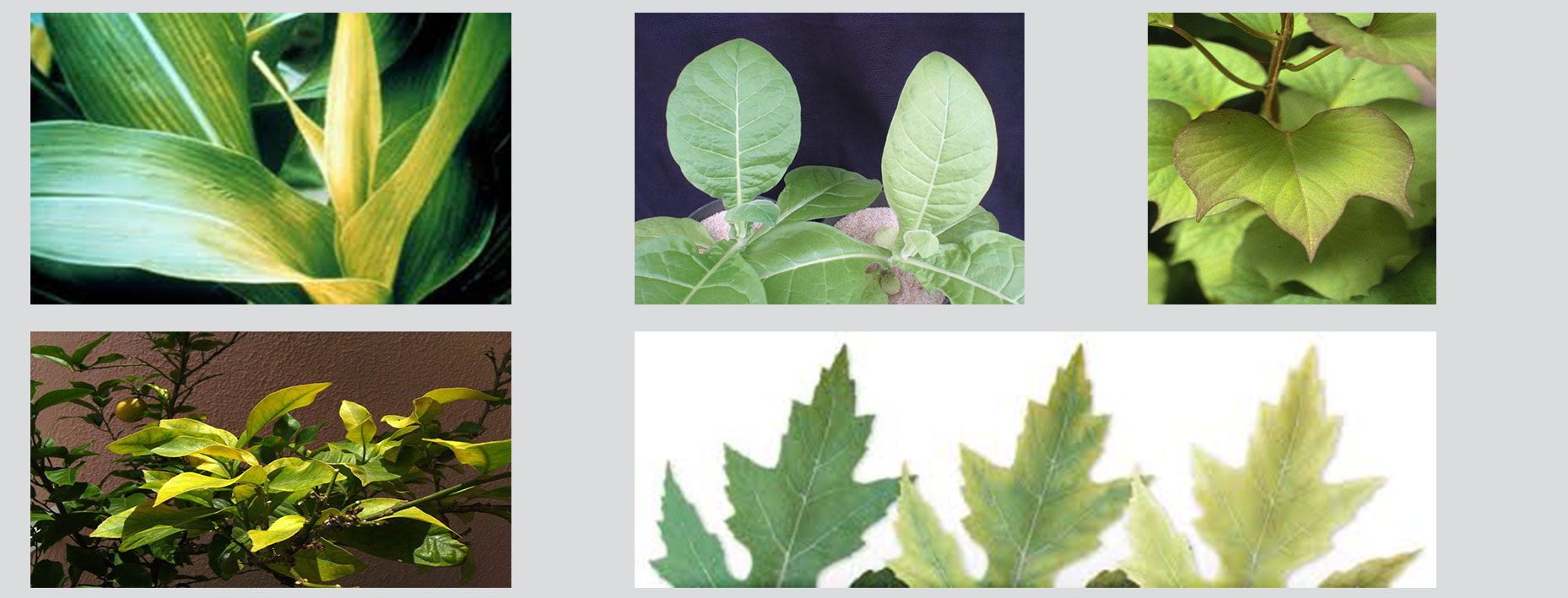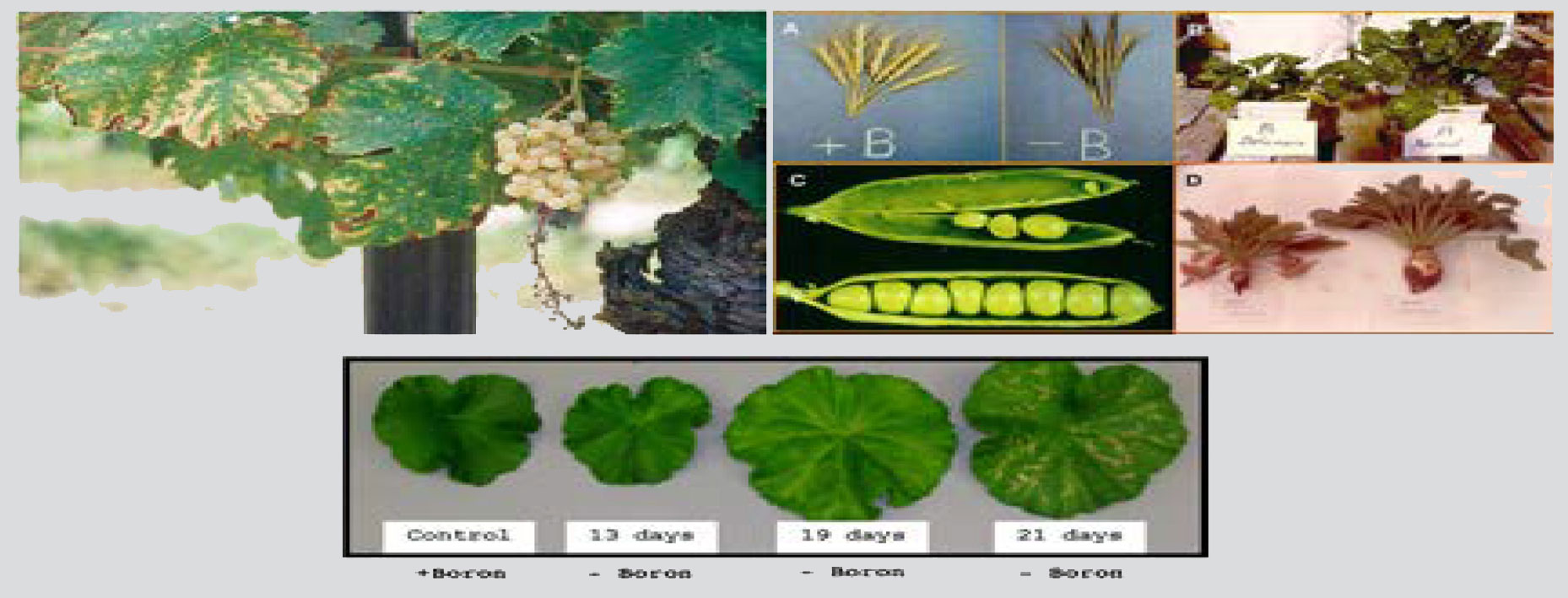Nutrient Deficiency Symptoms of Plants
Deficiency symptoms can be identified and diagnosed through the analysis of soil, leaves and the appearance of leaves and fruits. In different regions of the country, there is a severe lack of some traditional elements that help to better identify symptoms. Due to the non-observance of the balance of elements and the mutual effects of elements on each other, it is possible that the deficiency of several elements may occur at the same time and show different and severe signs of symptoms in plants.
Nutrient Mobility
1) Elements potassium, phosphorus, nitrogen, magnesium and molybdenum have the ability to move in the plant and move from old leaves to young and higher leaves. For this reason, the symptoms of the lack of these elements first appear in the lower leaves.
2) Elements of iron, zinc, manganese, copper, calcium, boron and sulfur are not able to move in the plant, and for this reason, the symptoms of deficiency of these elements first appear in the upper and younger leaves.
Deficiency symptoms can be different according to the type of plant. But according to the appearance of symptoms in old (lower) leaves or young (upper) leaves, there will be specific signs for different elements to identify the type of deficiency.
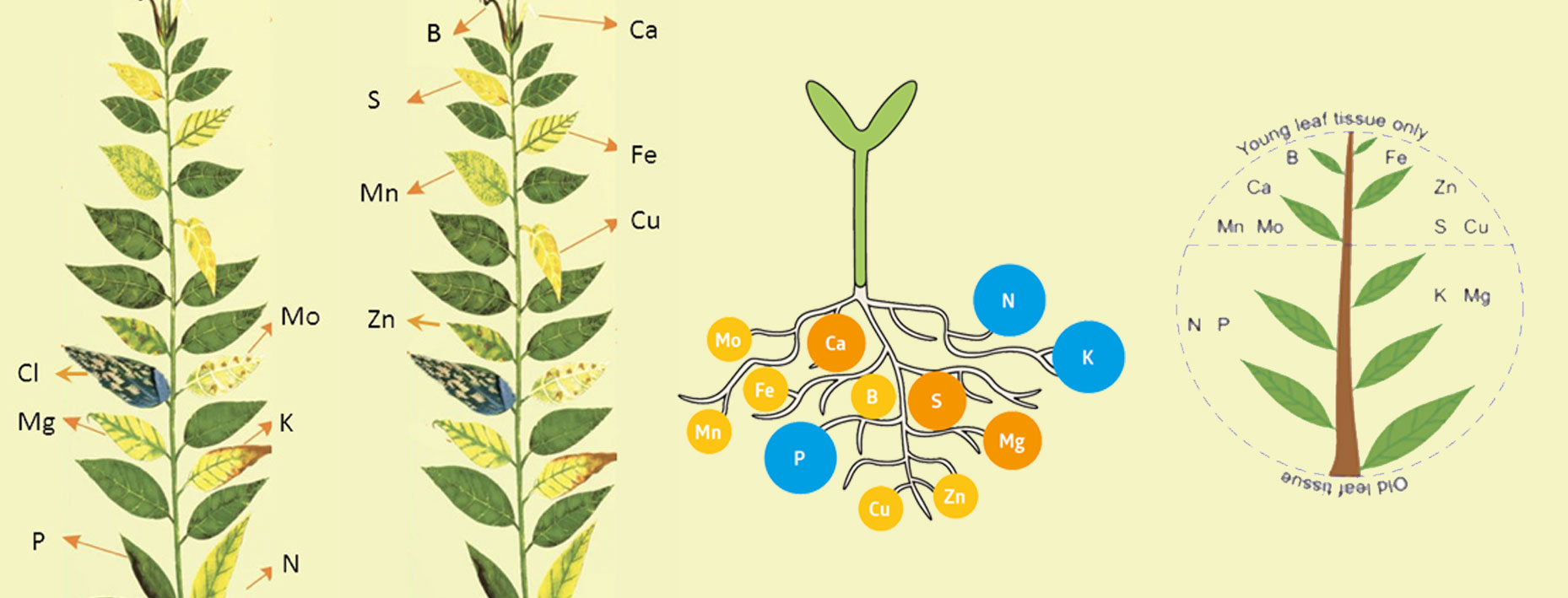
Deficiency of Elements in
Signs and symptoms of nitrogen (N) deficiency
- Nitrogen is an important part of the chlorophyll molecule and without nitrogen the paraffin rings on the four sides of the chlorophyll molecule will not be formed, so the first symptoms of nitrogen deficiency are pallor and chlorosis of the leaves, which starts from the old leaves first.
- At the end of growth, yellow, red and reddish purple color is also observed, which is the result of the formation of anthocyanin color.
- The leaves are small, the stems are slender and usually stand at a slight angle to the main stem.
Signs and symptoms of phosphorus (P) deficiency
- Changing the color of the leaves to dark green, dull blue with a bronze or purple tint
- Stopping or reducing the growth of aerial parts and roots (plants stay short)
- Preventing the growth of lateral stems, the opening of blossoms and buds, and the ripening of fruits
- Limiting the number of leaves and branches and the loss of side shoots
- Hard and brittle leaves
Signs and symptoms of potassium (K) deficiency
- Withering of leaves and hanging down from the margin
- The appearance of dark green to gray leaves, paleness and yellowing, especially between the leaves
- Partial chlorosis in older leaves with marginal necrosis (burning of leaf tips)
- Stopping the growth of the main stem and branches, making the plants weak, short and small
- Shortness of the distance between the nodes and in severe deficiency, drying of the branches from the end
- Pure fruits, nuts and cereal grains
- Wrinkling of leaves in peach, plum and apricot and cracking of leaves
- Black burn on the edge of pear leaves
Signs and symptoms of magnesium (Mg) deficiency
- Chlorosis is seen between the veins and is yellow-orange
- Due to the dynamic nature of magnesium, deficiency symptoms appear from old leaves
- Symptoms of magnesium deficiency are often confused with iron and nitrogen deficiency. (In nitrogen deficiency, leaves and veins are uniformly yellow, and in iron deficiency, leaves are yellow and veins are green, but in magnesium deficiency, leaves are yellow and veins are green, and the symptoms show first in older leaves.)
Signs and symptoms of molybdenum (Mo) deficiency
- Reduced plant growth
- Similar symptoms of nitrogen deficiency
- Reduction of leaf area
- Making yellow spots on the surface of the leaf
- Darkening of the veins
- First, the middle and young leaves of the plant turn yellow
- Over time, symptoms also appear in old leaves.
Deficiency of Elements in
Signs and symptoms of iron (Fe) deficiency
- Lack of iron causes the reduction of chlorophyll between the veins and causes chlorosis (yellowing) in plants. Therefore, it causes the appearance of yellowish spots between the veins of the leaves and the veins remain green.
- Due to the low mobility of the iron element, yellowness is first seen in the young leaves, and with the severity of the deficiency, it covers the whole plant.
- In cereals, the deficiency appears as green and yellow stripes along the length of the leaf (the veins are green and the space between the veins is yellow).
- The lack of iron leads to the drying of the plant and reduces the productivity and poor quality of plant products.
Differential diagnosis of iron-like deficiencies
- Iron deficiency: yellowish spots are seen between the leaves and the veins remain green, and yellowness is first observed in young leaves.
- Nitrogen deficiency: the leaves turn yellow uniformly and the veins do not remain green, and discoloration is first seen in older leaves.
- Magnesium deficiency: Symptoms of magnesium deficiency start from the old leaves due to the dynamic nature of the element, and chlorosis can be seen in yellow-orange color.
- Manganese deficiency: Veins do not remain green in extreme poverty, and symptoms of deficiency are first seen in young leaves.
Signs and symptoms of manganese (Mn) deficiency
- A small chlorophyll between the veins
- Symptoms similar to iron deficiency in the plant and the difference in the presence of gray spots on the leaves and dark spots and necrotic areas along the veins, as well as in the lack of manganese, unlike iron, the veins do not remain green in extreme poverty.
- The appearance of yellowish spots between the veins of young and green leaves, leaving a part of the margin of the veins
- The diseases of gray spot in oats and swamp spot in peas are caused by the lack of manganese in the plant.
Signs and symptoms of zinc (Zn) deficiency
- Yellowing of the spaces between the veins and the appearance of advanced necrosis between the veins
- Decreased growth of branches, premature shedding of leaves, decreased distance between nodes, yellowing and lightening of the color of the leaves at the end of the branch.
- Shrinking and rosette of plants
Prevent fruit and seed formation
Signs and symptoms of copper (Cu) deficiency
- Mild yellowing of the leaves and their small size along with necrotic spots
- The complexity of the leaves and the bending of the petiole downwards (the so-called camel lip of the leaves)
- Preventing flowering and fruit formation
- In cereals, the tips of the leaves turn white, the leaves remain narrow and complex, the spikes and spikes are not formed, and the seeds are broken.
- Summer wilt disease in apples, plums and stone fruits is caused by copper deficiency.
Symptoms and signs of calcium (Ca) deficiency
- Every day the margin of the youngest leaves and then they turn brown
- The tips of the leaves are curled up or down
- Deformation and shriveling of young leaves near the branch
- Irregular and tearing of the leaf margin
- Stopping the growth of meristem tissues, and in case of progress, tissue destruction
- Diseases of apple bitter spot, tomato stem rot, cork spot, end burn (leaf edge) of lettuce and black heart of celery are caused by calcium deficiency.
Boron deficiency symptoms in plants (B)
- Due to the lack of boron dynamics in the plant, deficiency symptoms are first observed in young leaves and branches.
- Stopping of terminal bud growth, blackening of vegetative buds and meristem tissues
- The formation of brown or corky tissues and rotting inside the tubers
- Deformation and fragility of petioles and midvein and split petiole in sugar beet are due to lack of iron.
